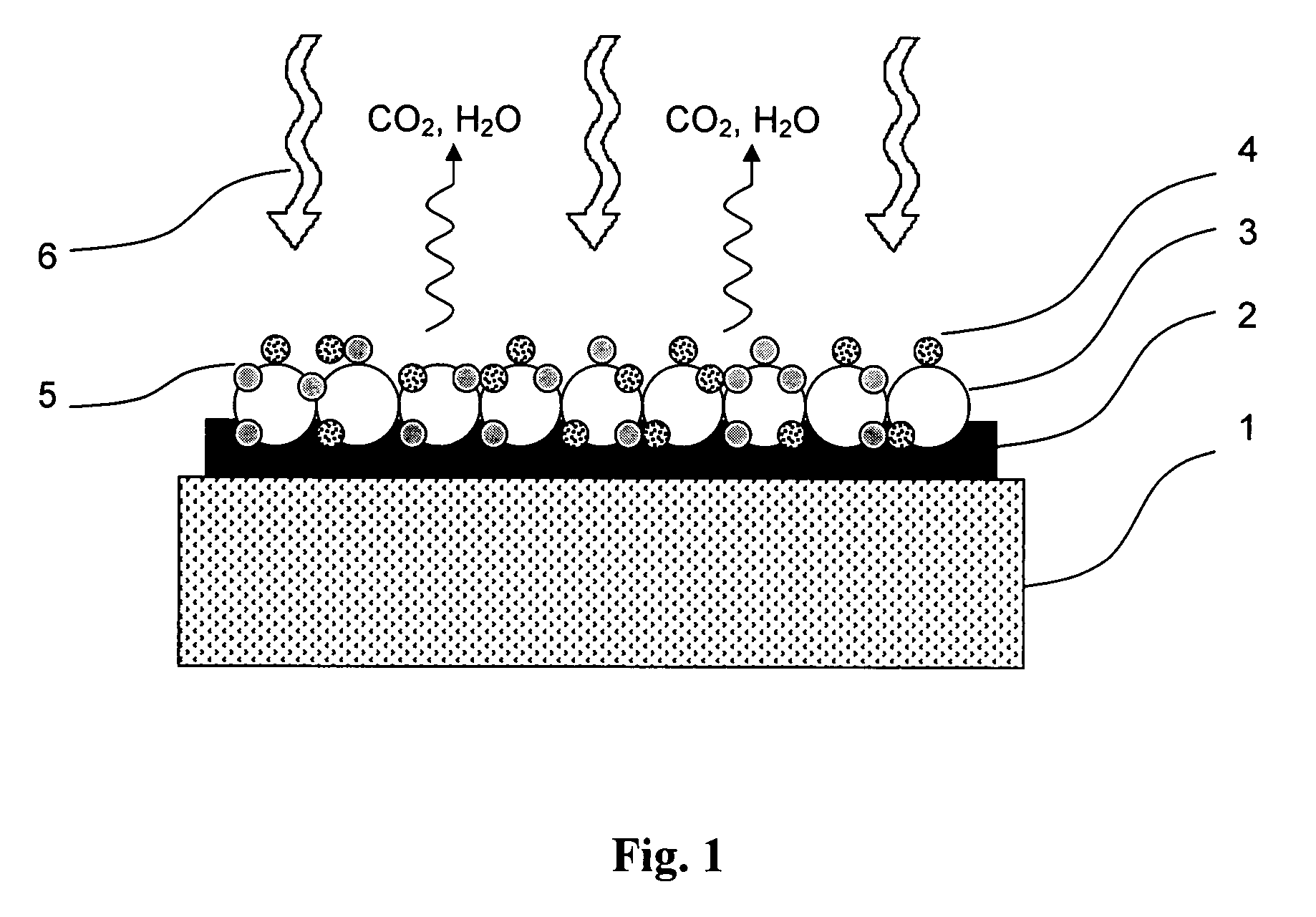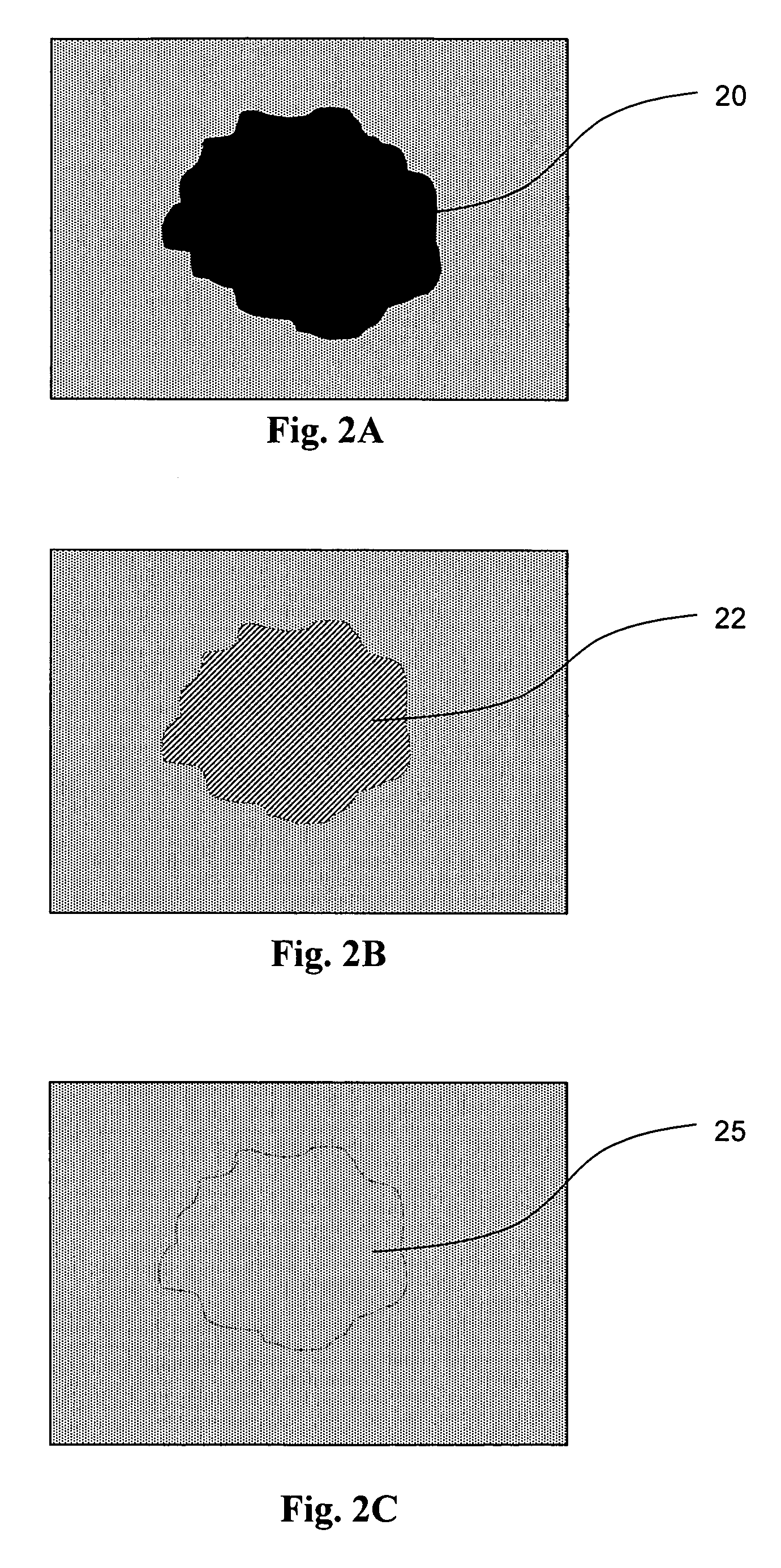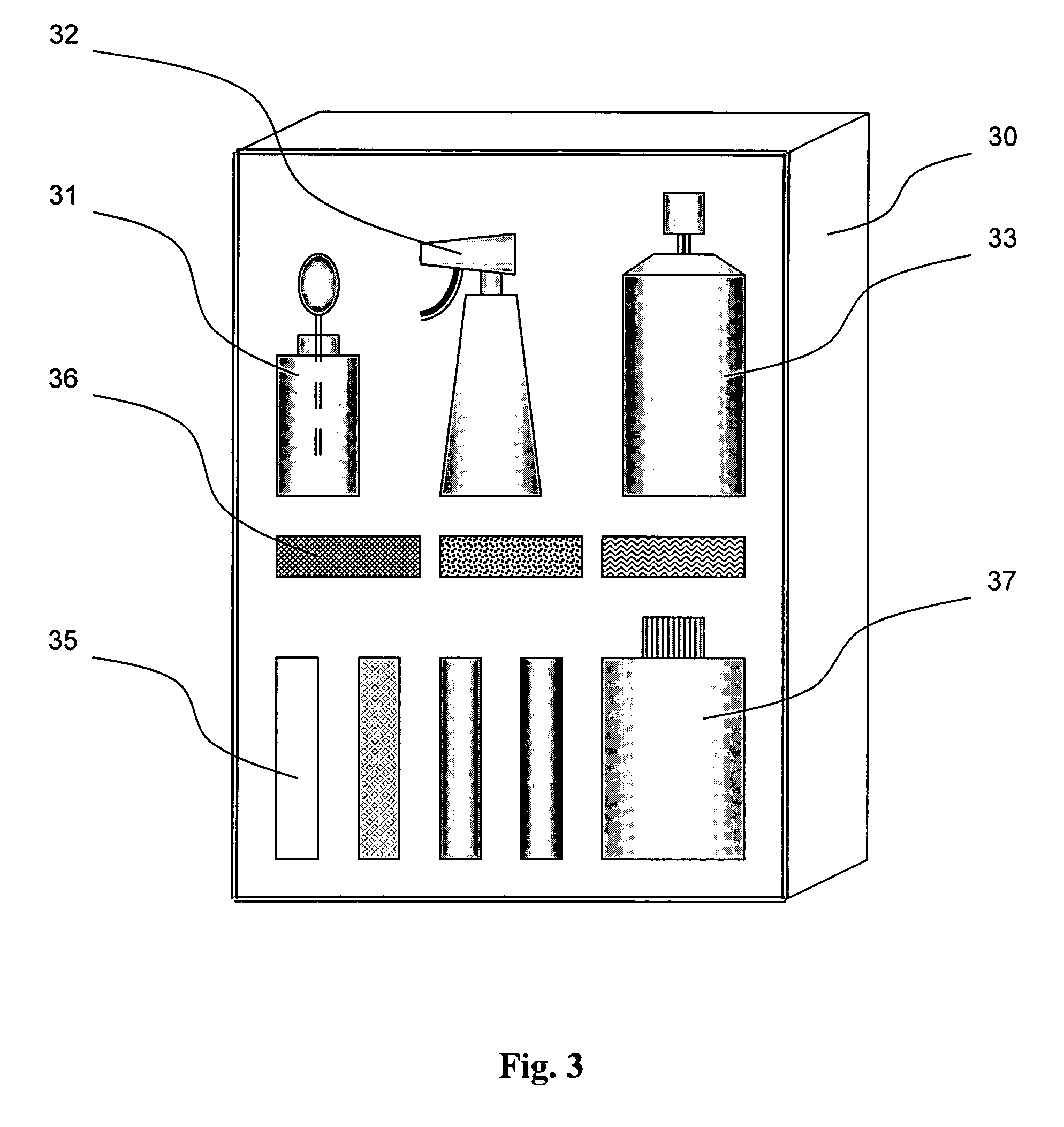Method for masking and removing stains from rugged solid surfaces
a technology for solid surfaces and masking, applied in the direction of detergent compounding agents, physical/chemical process catalysts, inorganic non-surface active detergent compositions, etc., can solve the problems of unsightly discoloration or soiled spots, add to the difficulty of treating and removing lube-oil stains, and rust stain, etc., to achieve the effect of masking effect and removal of stains
- Summary
- Abstract
- Description
- Claims
- Application Information
AI Technical Summary
Benefits of technology
Problems solved by technology
Method used
Image
Examples
example 1
[0113]In this example, we used TiO2 (manufactured by Degussa Corp.) with the following characteristics: crystallographic modification: a mixture of anatase and rutile (ratio about 3:1), surface area 50 m2 / g; the average particle size 30 nm. 1 g of TiO2 was added to 50 ml of denatured ethanol (obtained from Fisher Scientific) and thoroughly mixed to form a suspension. The obtained suspension is very stable: the powder did not precipitate for a period of several weeks and a certain portion of TiO2 particles remained in suspended state for several months and even years. Several drops of this suspension were dropped on the surface of an oil stain on asphalt such that a thin film of TiO2 covered the surface of the stain after evaporation of the solvent. The procedure may be repeated if after complete drying of the solvent, the oil stain still looks too dark against the surrounding area. FIG. 4A depicts the photo of an oil stain 40 on asphalt with a portion of the surface immediately afte...
example 2
[0114]The TiO2 suspension in ethanol, as used in Example 1, was dropped, using a conventional dropper, on the surface of a lube-oil stain occurring on a concrete driveway. The suspension was dropped in the middle of the stain and moved outward, to prevent spreading the film beyond the edges of the stain. One drop of the suspension covered about 2 cm2. FIG. 5A shows the photos of the original stain 50 and FIG. 5B show the treated stain 55 after a month of exposure to the elements. Caution should be exercised when applying the coating and an effort should be made to not apply the coating beyond the edges of the stain. However, if the applied coating extends to an unstained area, or the coating is too bright against the background color of the surface to be cleaned, the excess coating could be removed by brushing with soap and water.
example 3
[0115]Example 3 is similar to the Example 2, except that 5 ml of aqueous colloidal solution of platinum (0.025 wt. % Pt) was added to the TiO2 suspension in ethanol. In this example, Pt plays a role of a dopant that accelerates photodegradation of an oil stain. The colloidal Pt solution was obtained by mixing 2.5 ml of the aqueous solution of H2PtCl6 (0.1 wt. %) with 2.5 ml of the aqueous solution (0.01 wt. %) of the protective polymer (polyvinyl alcohol) followed by adding 0.1 g of sodium borohydride (NaBH4) to the mixture under well-stirred conditions at room temperature until all hydrogen bubbles ceased to evolve. The TiO2—Pt suspension in ethanol was used for photodegradation of lube-oil stains on a concrete driveway. Pt nanoparticles impart a grayish color to the TiO2 suspension, which provides a better masking effect, if used on a gray concrete surface.
PUM
| Property | Measurement | Unit |
|---|---|---|
| wt. % | aaaaa | aaaaa |
| wt. % | aaaaa | aaaaa |
| particle size | aaaaa | aaaaa |
Abstract
Description
Claims
Application Information
 Login to View More
Login to View More - R&D
- Intellectual Property
- Life Sciences
- Materials
- Tech Scout
- Unparalleled Data Quality
- Higher Quality Content
- 60% Fewer Hallucinations
Browse by: Latest US Patents, China's latest patents, Technical Efficacy Thesaurus, Application Domain, Technology Topic, Popular Technical Reports.
© 2025 PatSnap. All rights reserved.Legal|Privacy policy|Modern Slavery Act Transparency Statement|Sitemap|About US| Contact US: help@patsnap.com



